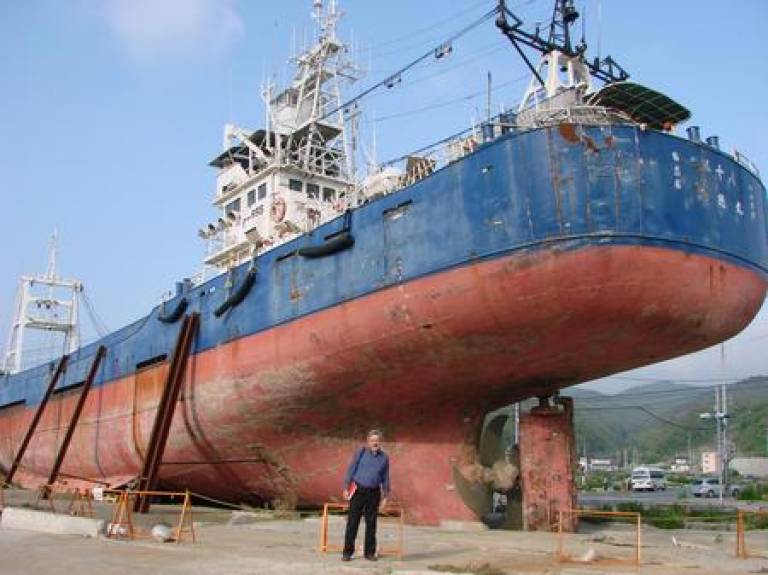Tsunami ship
7 October 2013

The Tohoku earthquake, which hit Japan in March 2011 was one of the most devastating natural disasters of recent years. Clocking in at magnitude 9.0 on the Richter scale, it was the fourth most powerful since records began, and the tsunami unleashed killed over 15,000 people.
Among the outcomes of the disaster was severe damage to the Fukushima Daiichi nuclear power plant, leading to widespread evacuation of nearby populated areas.
Tsunami do not look like walls of water, unlike their treatment in fiction. Rather, they appear like a large, high, fast and unstoppable tide moving inland. And rather than pulverising everything in their path, they drag debris along with them.
This photo shows how the tsunami swept a large 60-metre long fishing boat half a kilometre inland, dumping it in a residential area. In the two years since the tsunami, the wrecked ship has become a symbol of the disaster and a makeshift memorial, however work on dismantling the hulk began in September and is expected to end later this month.
Standing in front of the ship for scale is UCL's Prof David Alexander (UCL Institute of Risk and Disaster Reduction). His inaugural lecture, 'Around the World in 80 Disasters' is at 5pm today (7 October) - a full writeup and interview with Prof Alexander will be posted on the UCL Events Blog later this week.
Photo credit: David Alexander (UCL IRDR)
Links
High resolution image
This image can be reproduced freely providing the source is credited
 Close
Close




